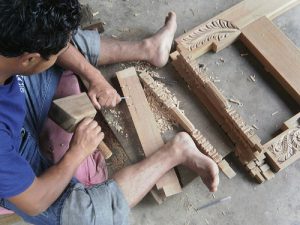Earnings from Handicraft Rises by 19 Percentage

Export earnings from handmade products surged 19 percent in the first four months of the current fiscal year, thanks to sustained demand from markets like China, the US, and Europe. Nepal’s handicraft industry is on the recovery path after suffering a massive hit from the earthquake and trade blockade last year. Statistics released by the Federation of Handicraft Associations of Nepal (Fhan) show that Nepal exported handmade products worth Rs1.98 billion during the period mid-July to mid-November Shipments amounted to Rs1.67 billion in the same period last year.
Fhan President Dharma Raj Shakya said that the handicraft business that was adversely affected by last year’s earthquake and trade blockade was back on track. According to him, business dropped last year due to a short supply of raw materials and manpower. “Based on current export trends, revenues are expected to touch Rs5 billion this year,” said Shakya. In 2015-16, Nepal exported handicraft goods worth Rs4.78 billion. Of the 25 major handicraft and unique items, earnings from felt products posted a growth of 69 percent with exports jumping to Rs559.62 million from Rs331.69 million. Shakya said that outfits and accessories made of felt had been attracting many foreign buyers in recent days. Felt products are mainly exported to the US and Europe. Similarly, metal crafts accounted for the second-highest export earnings.
Nepal’s export of metal crafts surged 30 percent to Rs465.46 million. These products are exported mainly to the US and China. Likewise, export earnings from glass products surged almost three-fold to Rs81.78 million. Decoration items and smoking devices are among the popular items in the segment. Exports of beads also increased to Rs57.96 million from Rs38.73 million. However, exports of pashmina products, handmade paper, and silver products declined during the review period. Export earnings from pashmina plunged by almost half to Rs156.98 million. Shakya attributed the fall to increasing exports of machine-made products. “As machine-made pashmina is cheaper compared to handwoven products, export values have declined,” he said. Shakya said orders for Nepali handicrafts had been coming from new markets like Mongolia and Vietnam. “Following a change in lifestyles in these countries, demand has increased.” Nepali handicrafts are shipped to 80 countries among which 30 are large buyers. Europe accounts for 43 percent of Nepal’s total handicraft exports, while the US accounts for 17 percent.








Leave a Reply